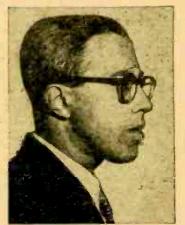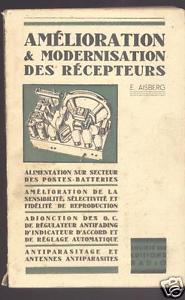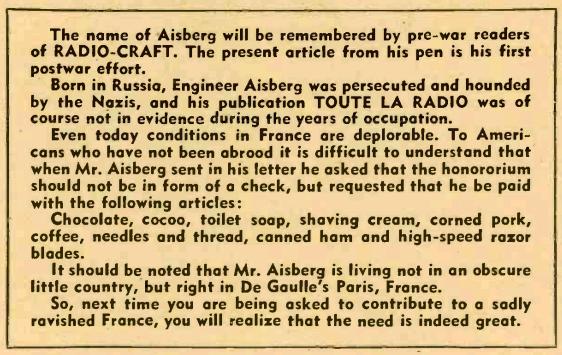After a wartime absence, the January 1946 issue of Radio Craft carried an article by writer Eugène Aisberg. While that name might not be familiar to American readers, Aisberg was a prolific author in the early days of radio, and wrote some of the best treatises on radio for the popular audience. He was fluent in French, Esperanto, German, Russian, and English.
Aisberg was born in Odessa, Ukraine, in 1905, and lived most of his life in France. He was the director of the French magazine Toute la Radio and a prolific author of a number of books. His most popular book, which is still in print, is La Radio? Mais c’est très simple (Radio? But It’s So Simple!) The book, currently in its 29th edition, an extremely solid background covering all aspects of electronics, and is written in a popular, easy-to-read style. While the book was ultimately translated into several languages, it was apparently never published in English.
The book consists mostly of a dialog between Ignotus and his uncle Curiosus, along with explanations by Professor Radiol, in which the characters explain in an interesting fashion all aspects of electronic theory.
Aisberg’s first radio book was actually published in Esperanto. Jen… mi komprenas la radion (“Now I understand the radio”).
During the war, under the noses of the occupying Germans, Aisberg published a book explaining how to pull in Radio London and other foreign stations. The technical title of the book, Amélioration et modernisation des recepteurs (“Improvement and Modernization of Radio Receivers”) was undoubtedly helpful in getting the book past the German censors.
While his most famous book was never translated into English, his later TV – It’s a Cinch was published in English in 1957. While analog TV is now an obsolete technology, the book is still an extremely interesting read, and the reader walks away knowing how the technology works.
The 1946 article, which marked his return to an American audience after the war, described a radio with automatic selectivity control. The article also contains the following sidebar, which is a fascinating reminder of conditions prevailing in France immediately after the war:
Because of the conditions prevailing in Paris, instead of a check, Aisberg preferred payment for the article to be in the form of “chocolate, cocoa, toilet soap, shaving cream, corned pork, coffee, needles and thread, canned ham, and high-speed razor blades.”
Aisberg died in Paris in 1980.
See also: Fall of Paris, 1940
Click Here For Today’s Ripley’s Believe It Or Not Cartoon
![]()




Pingback: Radio Waves: Eugène Aisberg, Filter Design, ABC Workers Face Cuts, and Data via Web SDRs | The SWLing Post